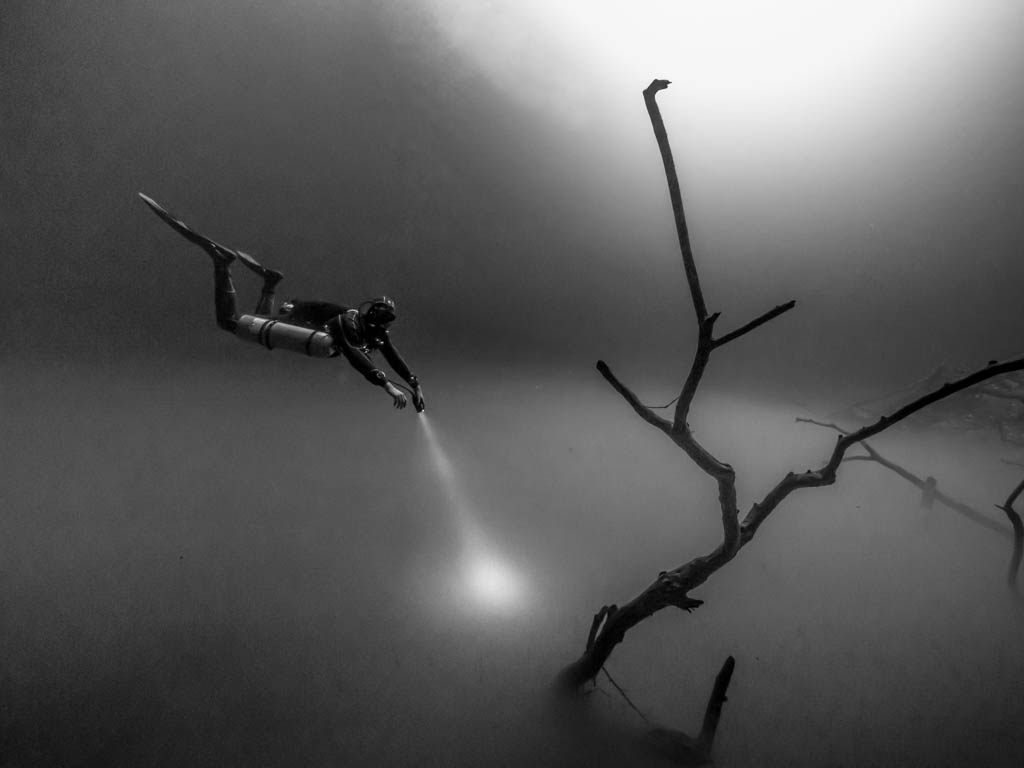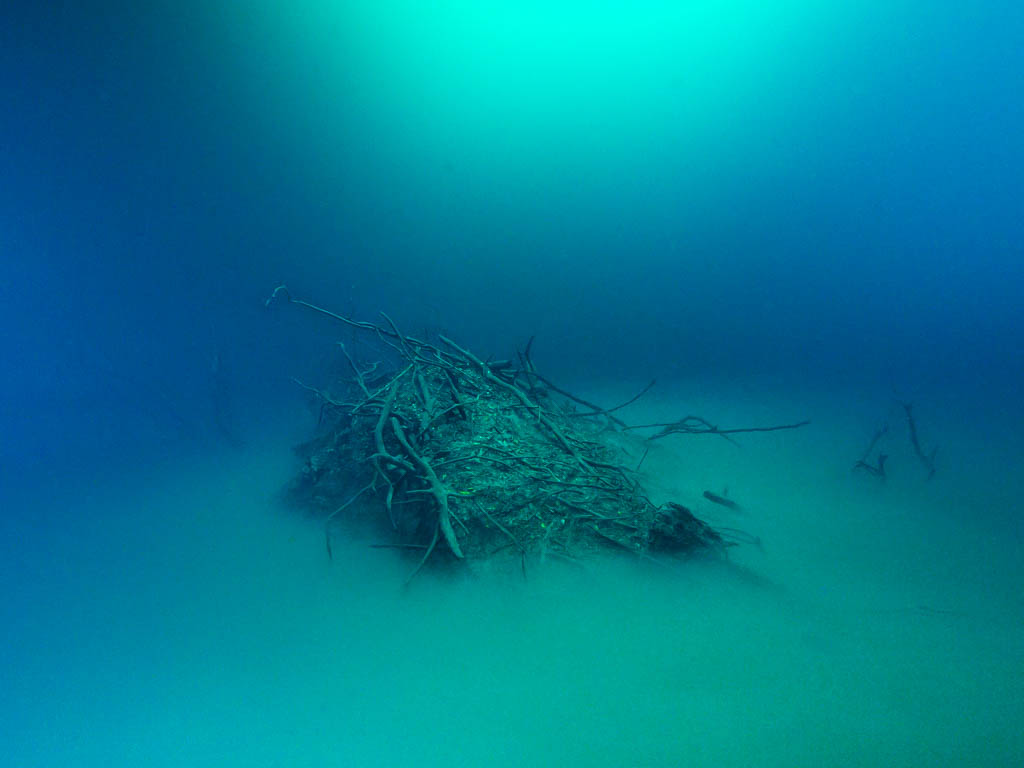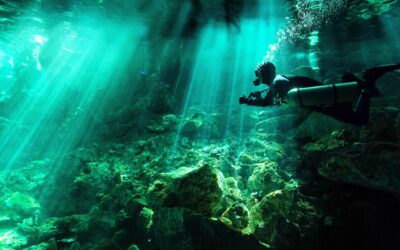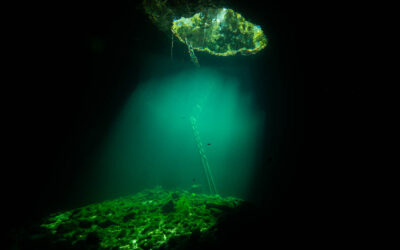- What is Cenote Angelita?
- What is the nickname for Angelita Cenote?
- Where is Angelita Cenote?
- What is Cenote Angelita like?
- How Deep is Cenote Angelita?
- What is the visibility like in Angelita Cenote?
- What Causes the Hydrogen Sulfide cloud?
- Going down
- What is the cloud of Hydrogen Sulfide like?
- What does the Cloud of Hydrogen Sulfide gas look like?
- Does it look like a swamp?
- Jungle Trees
- How Deep are Cenotes in Mexico?
- Cenote Angelita Diving Tours
What is Cenote Angelita?
Angelita Cenote means “Little Angel” in Spanish. Of all the Cenotes we dive Cenote Angelita in Mexico stands out as the most completely different dive. Most divers say that it is the most memorable Cenote dive we do.
What is the nickname for Angelita Cenote?
Most of the Cenotes in the Riviera Maya have a nickname. The nickname of the Cenote Angelita is “The Nightmare” It’s a serious dive and due to the depth, you need to have an advanced certification.
Where is Angelita Cenote?
Cenote Angelita is located near Tulum, about 15 mins drive to the south. A short walk through the jungle from the car park brings us to a large lake of water.
What is Cenote Angelita like?
Angelita Cenote is a cylinder that goes down. It differs from other Cenote dives as when the Cenote was formed, the collapsing roof has blocked the connecting cave passages. So there isn’t the same water flow as at other Cenotes.
How Deep is Cenote Angelita?
Angelita Cenote has a Maximum Depth of 56m. However, the maximum depth for recreational divers is 40m, so you must have technical dive training to exceed a depth of 40.
What is the visibility like in Angelita Cenote?
The lack of flowing water affects visibility. From the surface, we can’t see down to the main feature of the dive site. At 30m a thick cloud of Hydrogen Sulfide Gas.
What Causes the Hydrogen Sulfide cloud?
Caused by all the vegetation that falls into the Cenote, rotting at depth causes the organic material to produce a white smokey gas that hangs in the water. It is a poisonous gas so it’s best not to drink it.
Going down
As we descend from the surface it’s not until about 15/20m that we start to see it. Emerging out of this thick swampy cloud an island of rocks that have fallen in from the roof. Dead tree branches resting on to give it an ere feeling. We gather together and prepare to descend through the cloud.
What is the cloud of Hydrogen Sulfide like?
The cloud is 3m thick, visibility goes down to less than half a meter. We get through this bit as quick as we can because underneath the visibility is much better, but dark. It black like a night dive. Dead trees litter the bottom slope that disappears off down to 56m. We go to 40m Max. Then we slowly work our way back up to the cloud.
What does the Cloud of Hydrogen Sulfide gas look like?
Passing through, going up is the most awesome thing about this Cenote dive. Visibility is next to nothing but then as we come up the cloud appears as thin wispy lines in the water, it’s very cool. Just on top of that a halocline. A change from salt below to fresh above creates cool light effects which add to the experience.
Does it look like a swamp?
Above the cloud, we explore this eerie landscape. The cloud-like a swamp below us the island of rocks to the side as we glide through fallen tree branches. The island provides a haven for fish that live just above the cloud.
Being careful not to let our time get too low, it’s time to leave. Coming into the side of the cylinder we begin our nice, smooth, multi-level ascent to the surface. A small swim through passage brings us out amongst some interesting stalactite features. Under an overhang at 5m, we see big bulbous stalactites with rough edges. Interesting things to look at during ascent. But by far the most awesome feature is the cloud, so we maximize the time there.
Jungle Trees
During the safety stop, we can look up to see the overhanging jungle trees with the beautiful light coming through. It’s all just so magical and enchanting that most people say this stands out as the most memorable Cenote experience. Due to the challenge of the dive, it’s not recommended for the first day, best to get accustomed to this environment at an easier dive site first.
How Deep are Cenotes in Mexico?
Cenotes vary in depth from very shallow to very deep. The deepest Cenotes in Mexico by the Quintana Roo Speleological Survey.
Cenote Angelita Diving Tours
Cenote Diving Tulum Mexico – Best Cenotes Guide
When you visit the Riviera Maya, you must explore the Cenotes. The best way to discover this new world is underwater, Cenote Diving Tulum
The Pit Cenote Mexico 2021 El Pit Tulum
Have you seen the Dancing Light at The Pit Cenote Mexico?
Cenote Calavera Tulum is the Temple of Doom Mexico 2021
Have you seen the Halocline Scuba Diving Cenote Calavera, Tulum?





